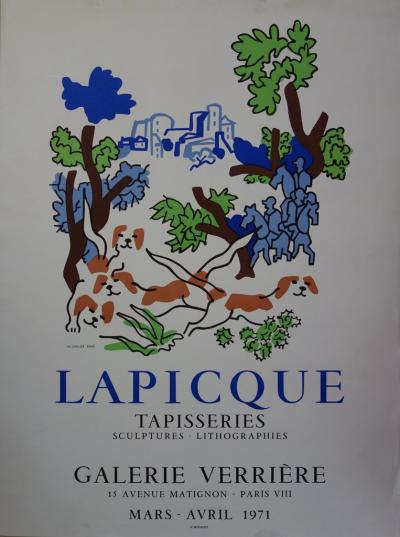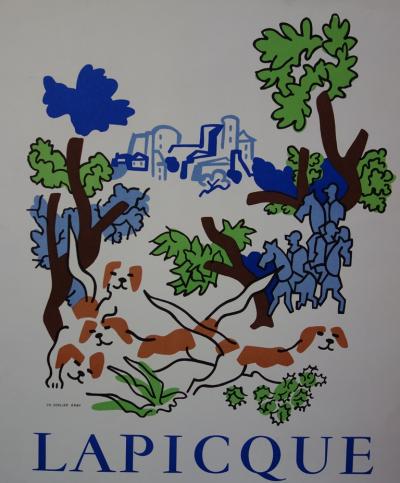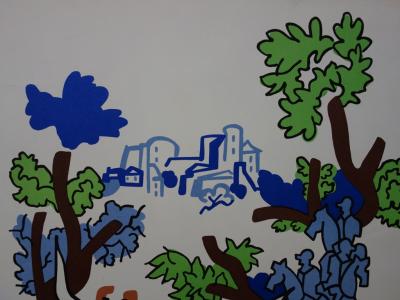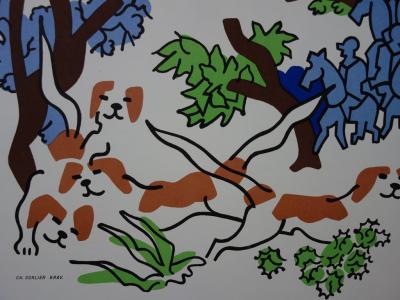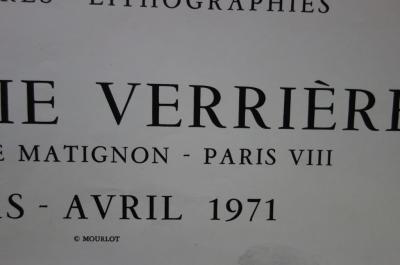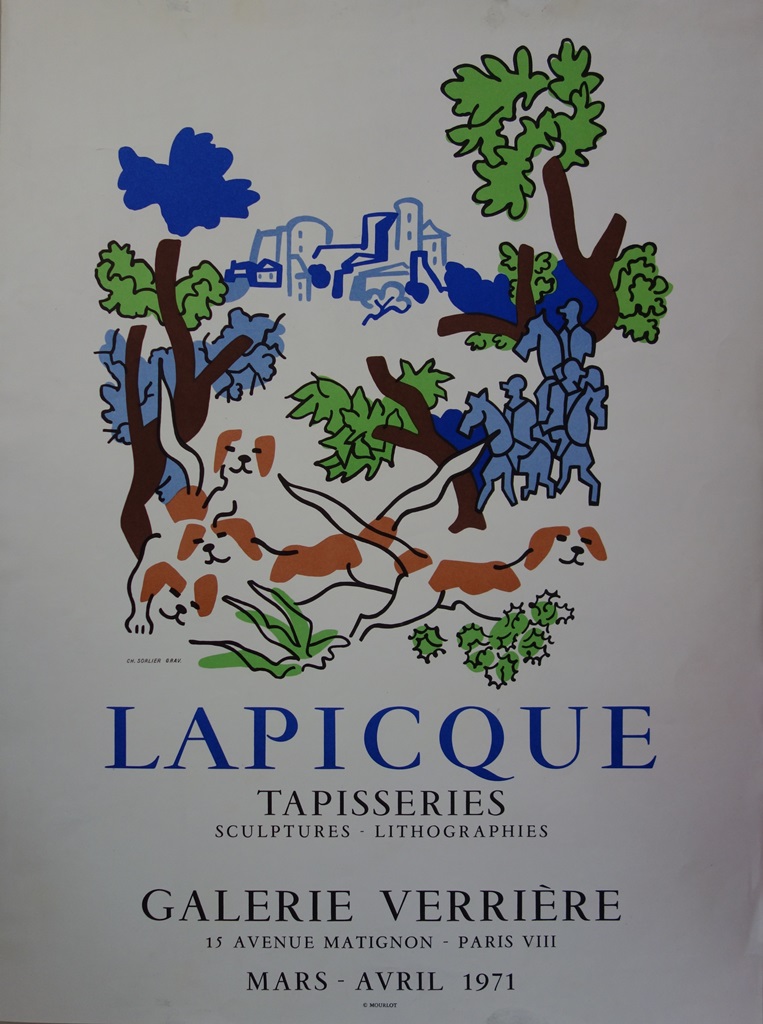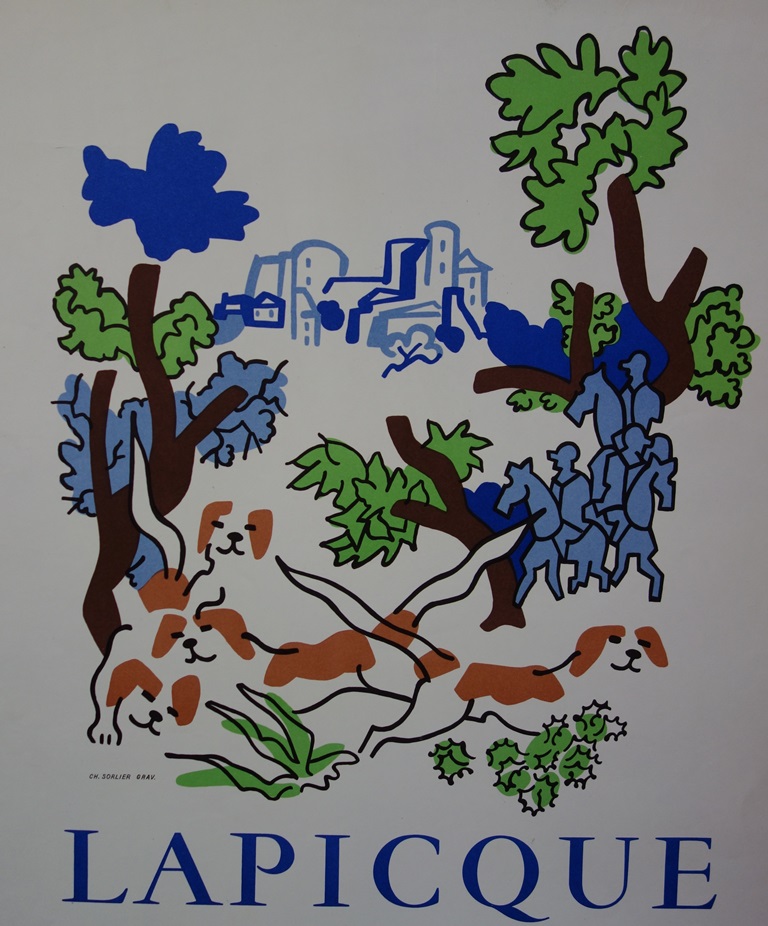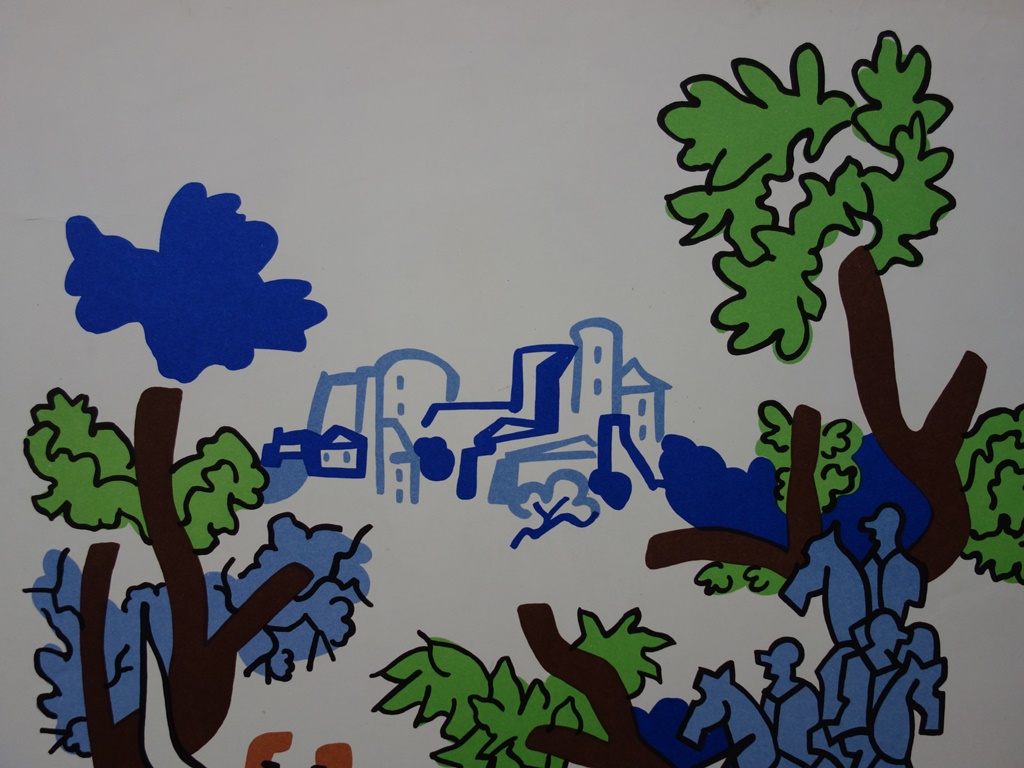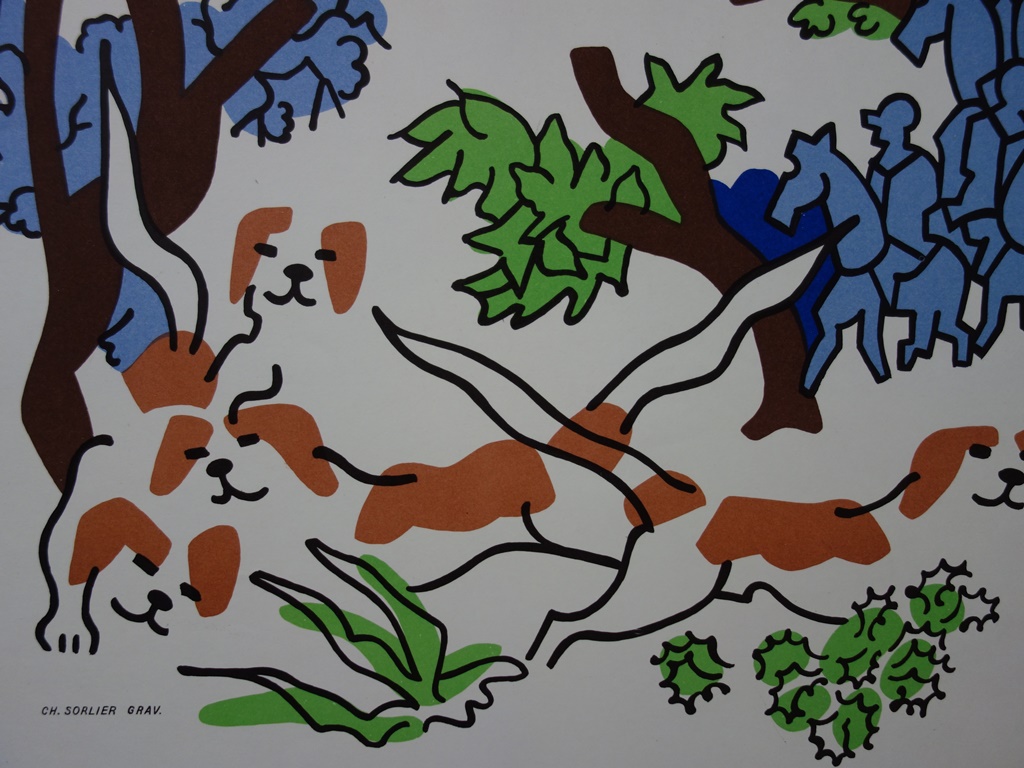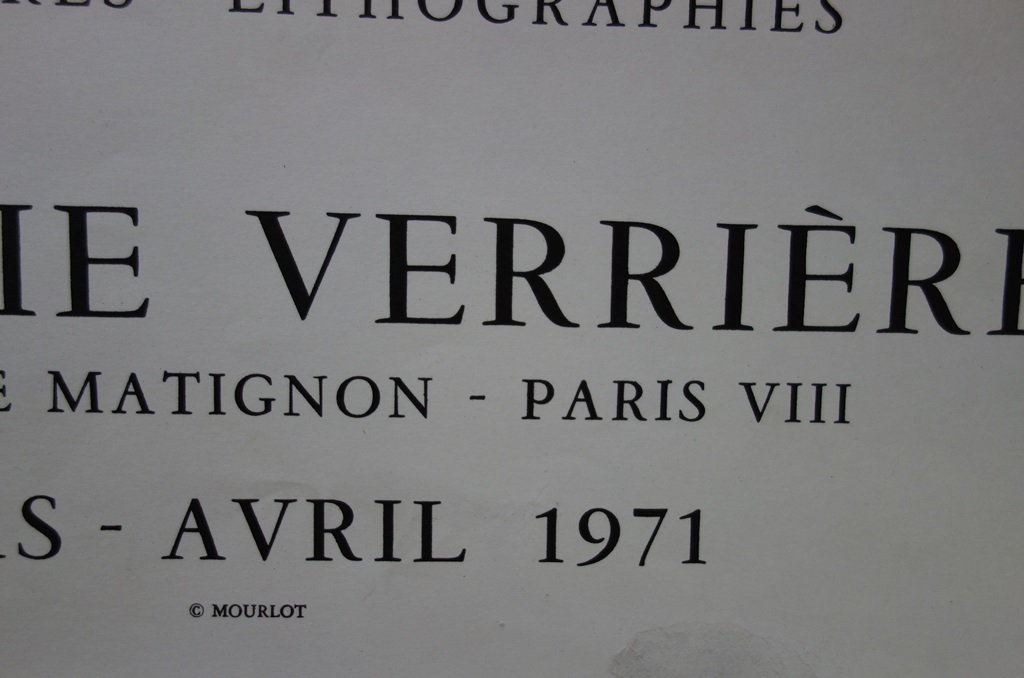-
- Alex Katz(1)
- Alexander Calder(49)
- André Derain(80)
- Andy Warhol(54)
- Antoni Tapiès(31)
- Arman(25)
- Aurélie Nemours(1)
- Bengt Lindström(6)
- Bernard Buffet(193)
- César(16)
- Charles Eames(1)
- Charlotte Perriand(19)
- Claude Weisbuch(41)
- Corneille van Beverloo(11)
- Eduardo Chillida(20)
- François Morellet(1)
- Georges Braque(99)
- Gustav Klimt(17)
- Hans Bellmer(19)
- Hans Hartung lithograph(21)
- Henri Matisse(139)
- Hervé Télémaque(5)
- Jacques Villeglé(1)
- Jean Cocteau(82)
- Jean Hélion(6)
- Jean Miotte(4)
- Jean Picart Le Doux(6)
- Joan Miro(182)
- Julio le Parc(1)
- Karel Appel(2)
- Keith Haring(11)
- Ladislas Kijno(2)
- Léonard Tsugouharu Foujita(39)
- Leonor Fini(77)
- Louis Toffoli(3)
- Marc Chagall(418)
- Marie Laurencin(47)
- Maurice de Vlaminck(49)
- Maurice Utrillo(20)
- Max Ernst(29)
- Mimmo Rotella(12)
- Niki de Saint Phalle(7)
- Pablo Picasso(343)
- Peter Klasen(18)
- Philippe Pasqua(14)
- Pierre Alechinsky(61)
- Pierre Soulages lithographs(33)
- Pierre Tal-Coat(5)
- Pierre-Yves Trémois(50)
- Raoul Dufy(63)
- Robert Combas(15)
- Salvador Dali(396)
- Théo Tobiasse(7)
- Valério Adami(34)
- Victor Vasarely(10)
- Yves Brayer(44)
- Zao Wou-Ki(15)
Top artists -
-
-
- Alex Katz(1)
- Alexander Calder(49)
- André Derain(80)
- Andy Warhol(54)
- Antoni Tapiès(31)
- Arman(25)
- Aurélie Nemours(1)
- Bengt Lindström(6)
- Bernard Buffet(193)
- César(16)
- Charles Eames(1)
- Charlotte Perriand(19)
- Claude Weisbuch(41)
- Corneille van Beverloo(11)
- Eduardo Chillida(20)
- François Morellet(1)
- Georges Braque(99)
- Gustav Klimt(17)
- Hans Bellmer(19)
- Hans Hartung lithograph(21)
- Henri Matisse(139)
- Hervé Télémaque(5)
- Jacques Villeglé(1)
- Jean Cocteau(82)
- Jean Hélion(6)
- Jean Miotte(4)
- Jean Picart Le Doux(6)
- Joan Miro(182)
- Julio le Parc(1)
- Karel Appel(2)
- Keith Haring(11)
- Ladislas Kijno(2)
- Léonard Tsugouharu Foujita(39)
- Leonor Fini(77)
- Louis Toffoli(3)
- Marc Chagall(418)
- Marie Laurencin(47)
- Maurice de Vlaminck(49)
- Maurice Utrillo(20)
- Max Ernst(29)
- Mimmo Rotella(12)
- Niki de Saint Phalle(7)
- Pablo Picasso(343)
- Peter Klasen(18)
- Philippe Pasqua(14)
- Pierre Alechinsky(61)
- Pierre Soulages lithographs(33)
- Pierre Tal-Coat(5)
- Pierre-Yves Trémois(50)
- Raoul Dufy(63)
- Robert Combas(15)
- Salvador Dali(396)
- Théo Tobiasse(7)
- Valério Adami(34)
- Victor Vasarely(10)
- Yves Brayer(44)
- Zao Wou-Ki(15)
Top artists -
-
Charles LAPICQUE: Landscape of Provence with hunters - Original lithograph - Mourlot 1971
Provence landscape with hunters
Original lithograph
Printed in the Mourlot workshops
Made for the exhibition "Tapestries, sculptures, lithographs" in 1971 at the Galerie Verrière
71 x 52 cm
First edition
Excellent condition, small flaws on the edge of the sheet
Dimensions :
- Height : 71 cm
- Width : 52 cm
Paysage de Provence aux chasseurs
Lithographie originale
Imprimée dans les ateliers Mourlot
Réalisée pour l'exposition "Tapisseries, sculptures, lithographies" en 1971 à la Galerie Verrière
71 x 52 cm
Edition originale
Excellent état, petites défauts en bord de feuillet
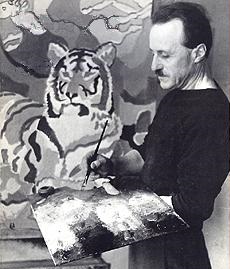 Charles Lapicque :
(1898-1988) is a french painter of the Nouvelle École de Paris. His works between 1939 and 1943 are considered as crucial for the development of the non-figurative painting in the 1950's, for the Pop Art movement, narrative figuration and figuration libre. Charles Lapicque studied engineering, and used to paint landscape and marines in the weekend. In 1928, he gave up his engineer career to dedicated himself to painting. In 1929 he had his first personal exhibition at the Galerie Jeanne Bucher. He then resumed his studes at the Faculté des sciences de Paris, and started a thesis about the "eye optique and the outlines vision" ("l'optique de l'œil et la vision des contours"). He focused his research on the perception of colours, which led him to overthrow the classi rule of colours spreading out in space, observing that blue is the color of what is close, and red is the colour of what is far.
He was called up at the Centre national de la recherche scientifique à Toulouse, and worked starting from 1939 with Antoine de Saint-Exupéry on night vision and camouflage. His paintings on the eve of the 1940's are directly at the origin of non-figurative construction, which appeared in the following years, through Jean Bazaine, Jean Le Moal, Alfred Manessier or Gustave Singier. In 1941 he participated to the exhibition "Vingt jeunes peintres de tradition française", the first avant-garde exhibition during Occupation, when in the meantime nazis were condemning "degenerate art". In 1943, he definitively dedicated his life to painting.
He and his wife Aline hid jews during the War. In 1944 he painted several canvases for the Liberation of Paris.
According to Jean Guichard-Meili, « his work has in contemporary french art a crucial place. His progress against the tide ensured him originality (...). His maritime vocation, and numerous paintings of the years 1939-1940 (Figures armées, Le port de Loguivy, Jeanne d'Arc traversant la Loire, Sainte-Catherine de Fierbois, etc.) have the same role as the "Demoiselles d'Avignon" and the landscapes of Horto and Hebro in the cubist adventure of the beginning of the century."
Charles Lapicque :
(1898-1988) is a french painter of the Nouvelle École de Paris. His works between 1939 and 1943 are considered as crucial for the development of the non-figurative painting in the 1950's, for the Pop Art movement, narrative figuration and figuration libre. Charles Lapicque studied engineering, and used to paint landscape and marines in the weekend. In 1928, he gave up his engineer career to dedicated himself to painting. In 1929 he had his first personal exhibition at the Galerie Jeanne Bucher. He then resumed his studes at the Faculté des sciences de Paris, and started a thesis about the "eye optique and the outlines vision" ("l'optique de l'œil et la vision des contours"). He focused his research on the perception of colours, which led him to overthrow the classi rule of colours spreading out in space, observing that blue is the color of what is close, and red is the colour of what is far.
He was called up at the Centre national de la recherche scientifique à Toulouse, and worked starting from 1939 with Antoine de Saint-Exupéry on night vision and camouflage. His paintings on the eve of the 1940's are directly at the origin of non-figurative construction, which appeared in the following years, through Jean Bazaine, Jean Le Moal, Alfred Manessier or Gustave Singier. In 1941 he participated to the exhibition "Vingt jeunes peintres de tradition française", the first avant-garde exhibition during Occupation, when in the meantime nazis were condemning "degenerate art". In 1943, he definitively dedicated his life to painting.
He and his wife Aline hid jews during the War. In 1944 he painted several canvases for the Liberation of Paris.
According to Jean Guichard-Meili, « his work has in contemporary french art a crucial place. His progress against the tide ensured him originality (...). His maritime vocation, and numerous paintings of the years 1939-1940 (Figures armées, Le port de Loguivy, Jeanne d'Arc traversant la Loire, Sainte-Catherine de Fierbois, etc.) have the same role as the "Demoiselles d'Avignon" and the landscapes of Horto and Hebro in the cubist adventure of the beginning of the century."
FRAC Brittany (France)
Center Pompidou - National Museum of Modern Art (France)
Dijon Museum of Fine Arts (France)
Grenoble Museum (France)
Artothèque of Brest (France)
nufnuf-art foundation (Switzerland)
Cour d'Or Museum - Metz (France)
National Center for Plastic Arts (France)
Museum of Modern Art of the City of Paris (France)
Quimper Museum of Fine Arts (France)
The Modern Museum in Sweden - Moderna Museet (Sweden)
Eli ans Edythe Broad Art Museum (The USA)
Rolin Museum (France)
This item is not available. Please click on « View the catalog » to see similar items available.
